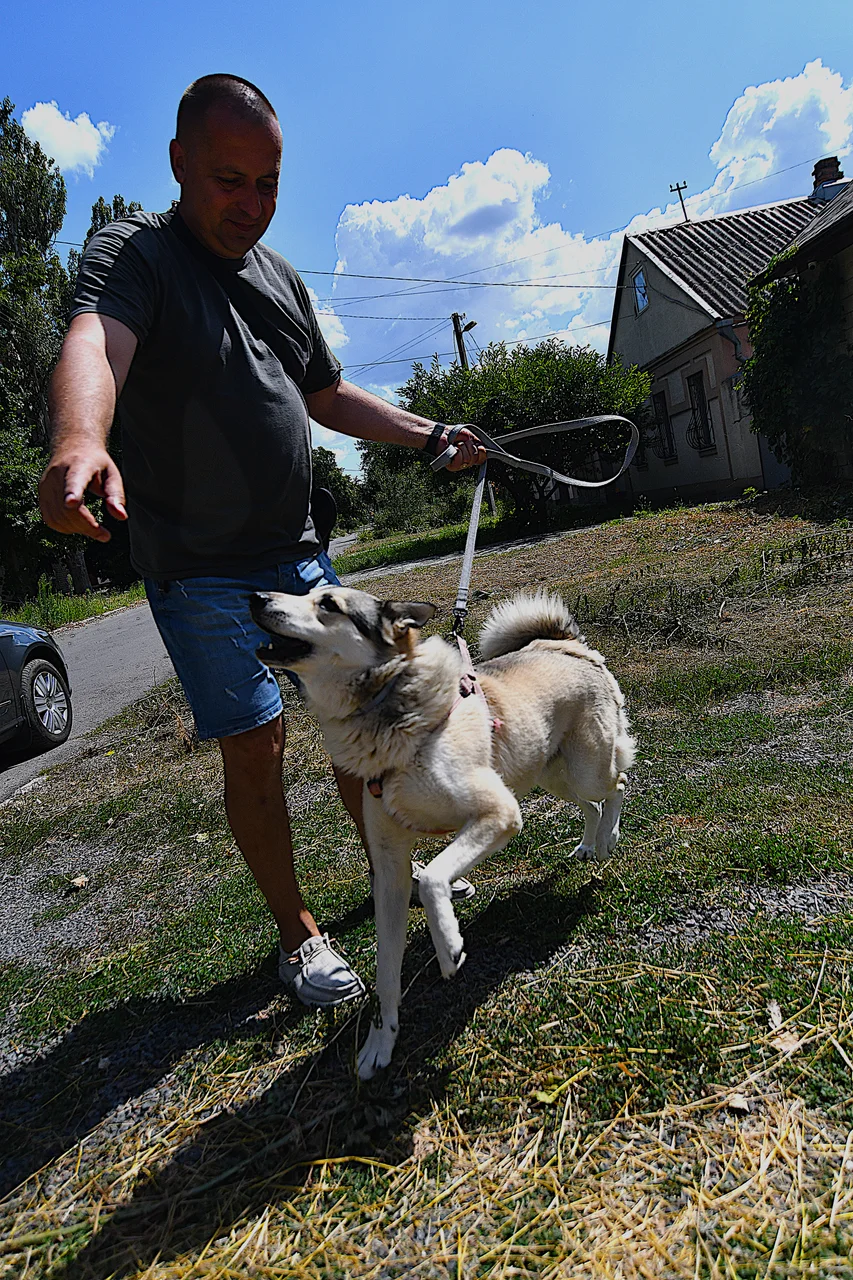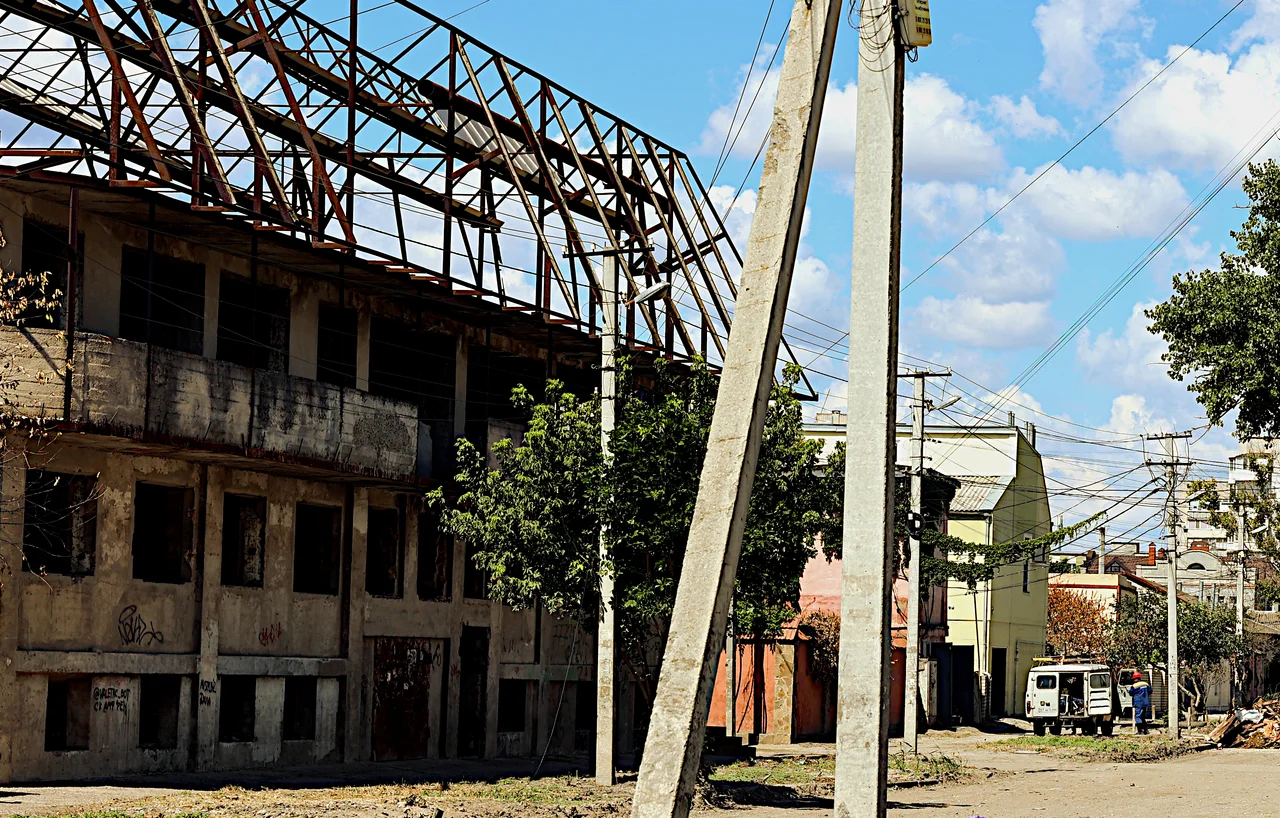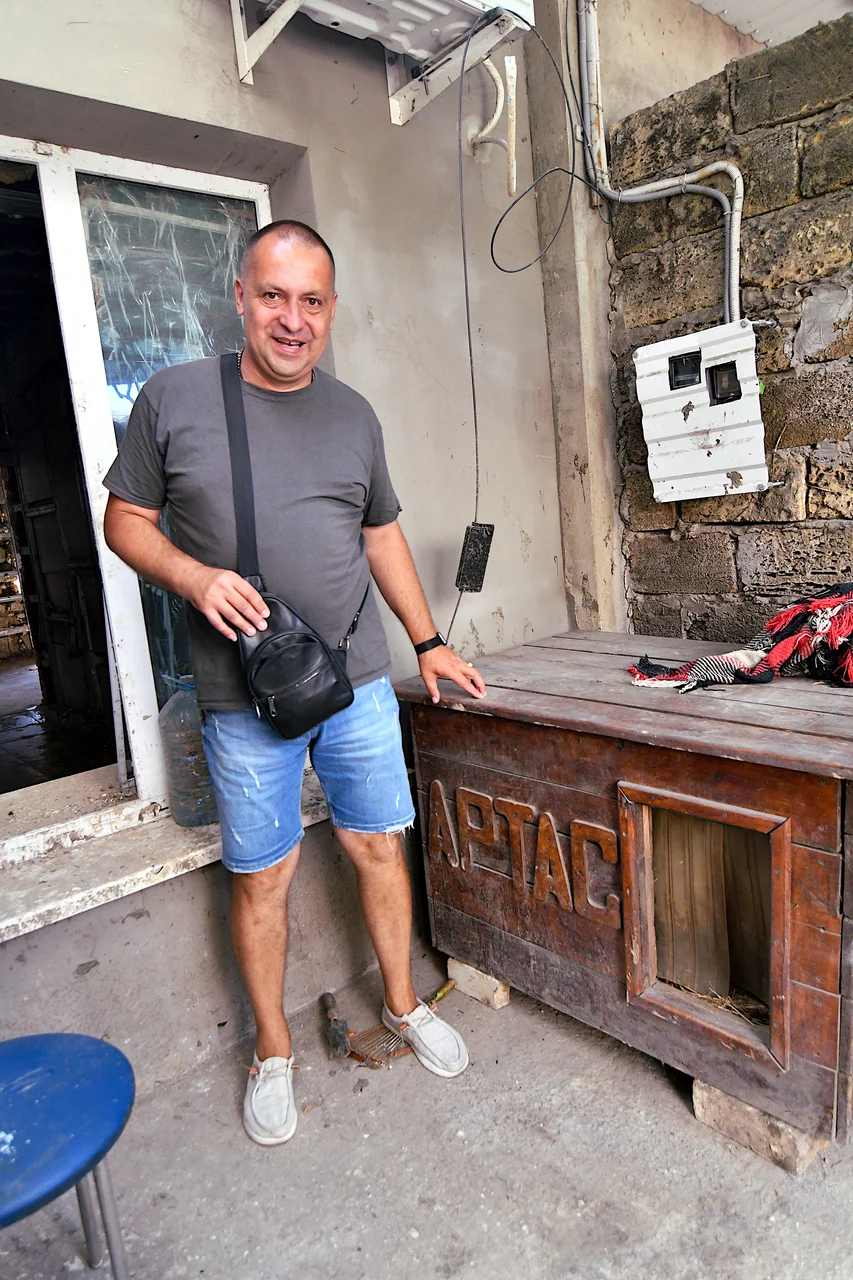The Russian army’s demolition of the Kakhovka dam and hydroelectric power plant (HPP) on Tuesday, June 6 unleashed a five-meter-high floodwater surge in the Kherson region that overwhelmed thousands of homes and businesses, many up to their roofs.
The Taran’s home, built in 1886, had been owned and lived in by five generations of the same family. In a matter of hours, it was reduced to a rotting shambles which was almost certainly not worth trying to repair.
JOIN US ON TELEGRAM
Follow our coverage of the war on the @Kyivpost_official.
By the morning of June 11, Andriy, a lawyer, his wife, a certified notary, his mother-in-law, his two children and three-year-old Artas, their dog, were no longer the solid middle-class family with bright prospects for the future that they had been less than a week before.
They were now refugees whose entire property and belongings, less a few personal items and title documents they had managed to grab, had been obliterated by the war.
“I guess I’ll have to try and fix the place up, it’s not like we have a lot of other options. But everyone is in a difficult situation,” Taran told Kyiv Post in Kherson during a July 10 interview. “The main thing is, we got out with our lives.”
Kherson pet owner Andriy Taran instructs his West Siberian Laika, named Artas, to run towards a photographer, Kherson Ukraine. July 10 2023 Kyiv Post photograph by Stefan Korshak.
Counter-attacking Ukrainian troops in November had liberated Kherson from a nine-month Russian army occupation. By June the former agricultural, industrial and trading hub had become a truly front-line city fully controlled by Ukrainian authorities, but hit by Russian artillery and missile fire, from the other side of the river Dnipro, on an almost daily basis.

Belgian F-16 Deliveries to Ukraine Delayed by F-35 Hold-Up
We met Taran, along with a few other remaining homeowners, as they picked their way through wreckage in Kherson’s now almost-totally depopulated Dniprovsky district. He told Kyiv Post that, in a way, living in the Ukrainian city that was arguably one of the most hammered by Russian forces prepared them for the June 6 flood.
While the city was under Russian control any Kherson resident was subject to arrest with their home open to a police invasion and search, without warning. Equally unpredictable were the still-incoming Russian shells and missiles, which seemed to be fired without any logic against mostly civilian homes and businesses.
Everyone with any sense in Kherson, Taran said, kept a “go bag” which held critical documents, cash and medicine, both in case you needed to escape the Russian police, or later in case the Russian artillery blew up the place you and your family slept.
This video provided to Kyiv Post by local resident Andriy Taran shows the recovery of the family doghouse, which floated free following Russian-caused catastrophic flooding in Kherson.
Ukrainian officials had, since almost the start of the war, been warning the world that Russian troops had planted explosives within the Khakhovka HPP , and Kherson media in early June had widely reported that water levels upstream of the dam were at a 30-year high. So, when the dam blew, Taran said, the family go bags had long been ready, and civilian emergency communication networks were well-practiced.
When Russian combat engineers set off the charges in the early hours of June 6, Taran said, regional Telegram channels passed on the news almost instantaneously. By 6 a.m. the streets in Taran’s neighborhood, which was some 60 kilometers downstream, were already flooded and water lapped the walls of the buildings.
Families loaded what they could in cars and headed to high ground, with go bags and whatever else they thought was important that they could carry. In the Taran’s case that included a couple of bags of dog food for Artas the Laika, not because he is picky, but because dog food hadn’t been so easy to find in Kherson, even before the disaster.
Ukrainian repair workers check damage in a lowlying district of Kherson, July 10 2023. Five meters of water flooded this region in early June. Kyiv Post photograph by Phil Ittner.
The Kremlin had blamed Ukraine for blowing up the dam without offering evidence. According to radio intercepts later published by Ukraine’s national intelligence agency the SBU, combat engineers from Russia’s 205th Separate “Cossack” Motor Rifle Brigade had set off the charges.
Kherson’s old city center and most of its Soviet-era industry is built mostly on high ground, but much of its 19th and early 20th century homes and businesses were built on the low-lying river front. The main mass of water released by the Russians at Kakhovka, therefore poured through Taran’s neighborhood. According to his account as a helpless eyewitness, he watched the river flood immerse just about everything he had come to own after a quarter century of work: home, furniture, books, electronics, photo albums, toys, bed linens, power tools, exercise equipment, clothes, emergency food, rugs and household appliances.
The water was up to his knees within an hour and to his waist an hour later. By afternoon the water released from the Dnipro covered the entire district with single-story buildings fully under water. Later, using a boat, Taran salvaged Artas’ wooden kennel, which had floated free and come to rest on a neighbor’s roof.
Experts are still trying to estimate the scope of damage. The flooding swamped both sides of the river, killing at least 58 people with at least 31 still missing, according to combined Ukrainian and Russian government estimates.
The independent British Centre for Economic Policy Research in a July 10 estimate said flooding from the destruction of the Kakhovka dam and HPP had a catastrophic impact on more than 100,000 Ukrainians and had effectively ended human habitation in a territory the size of Switzerland.
The report said that putting the flood damage right would cost at least $4 billion, in the short term. Ukrainian authorities will face, in addition, another $2 billion bill to restore potable water supplies, irrigation and navigation infrastructure on the Dnipro River to pre-flood capacities, the article’s author Simeon Djankov wrote.
There were earlier fears that the flooding in Kherson could trigger a massive outbreak of cholera, a disease caused by drinking water becoming polluted with human waste. In mid-June high profile international publications such as Politico and the New York Times were warning the potentially lethal disease could devastate flood-hit regions. Thankfully these anxieties appear to have been overblown.
Kherson residents told Kyiv Post that the doomsday scenario did not come to pass because the flood was so devastating that it made any place in Kherson where a person might come into contact with contaminated drinking water totally unlivable. It had not just destroyed supplies of potable water and most infrastructure including power lines, gas mains, fuel stations, food stores and even roads.
A repair worker in the low-lying Dniprovsky district gave as an example a nine-story apartment building near the Taran home which, he said, was totally empty apart from a single resident, a man on an upper floor who was too sick to move and was now cared for by volunteers. Local residents, in interviews with Kyiv Post during July 9-11, said they now considered water in Kherson city taps safe to drink.
Kherson homeowner Andriy Taran shows the family dog's doghouse following salvage. The doghouse floated away during heavy flooding of the family home but Taran later found it. July 10 2023 Kyiv Post photograph by Stefan Korshak.
The Tarans are now in temporary housing and, with Mrs. Taran’s notary business still bringing in a small income into the family, they are a little better off than many.
There is no business for lawyers in Kherson these days, so Taran is unemployed. He spends his days picking through the wreckage of the family home, salvaging what he can, and removing trash. A month after the flood the interior stucco walls are still damp and in the corners covered in mold. A slap-dash, low-quality repair job, were the city to re-establish water and power, would cost at least $20,000.
Returning the home to the comfortable state it was in before the flood, would be at least twice that, he said. Government adjusters came around a week ago, took photographs, agreed the damage is pretty much total, yet promised nothing, Taran said.
A few well-stocked supermarkets are now operating in Kherson but, even with prices which are lower than elsewhere in Ukraine, are usually far beyond the means of most Kherson residents. People are surviving because basic foodstuffs are available from volunteers, who drive into Kherson with trucks and vans of donations from other parts of Ukraine.
Ironically, one of the few items now in good supply is, Taran said, dog food. Ukrainians donating to food deliveries to Kherson seem to think pets shouldn’t be forgotten, so at least the still-growing Artas the Laika has access to a healthy mixed diet of dry bagged and canned food, Taran said.
You can also highlight the text and press Ctrl + Enter














